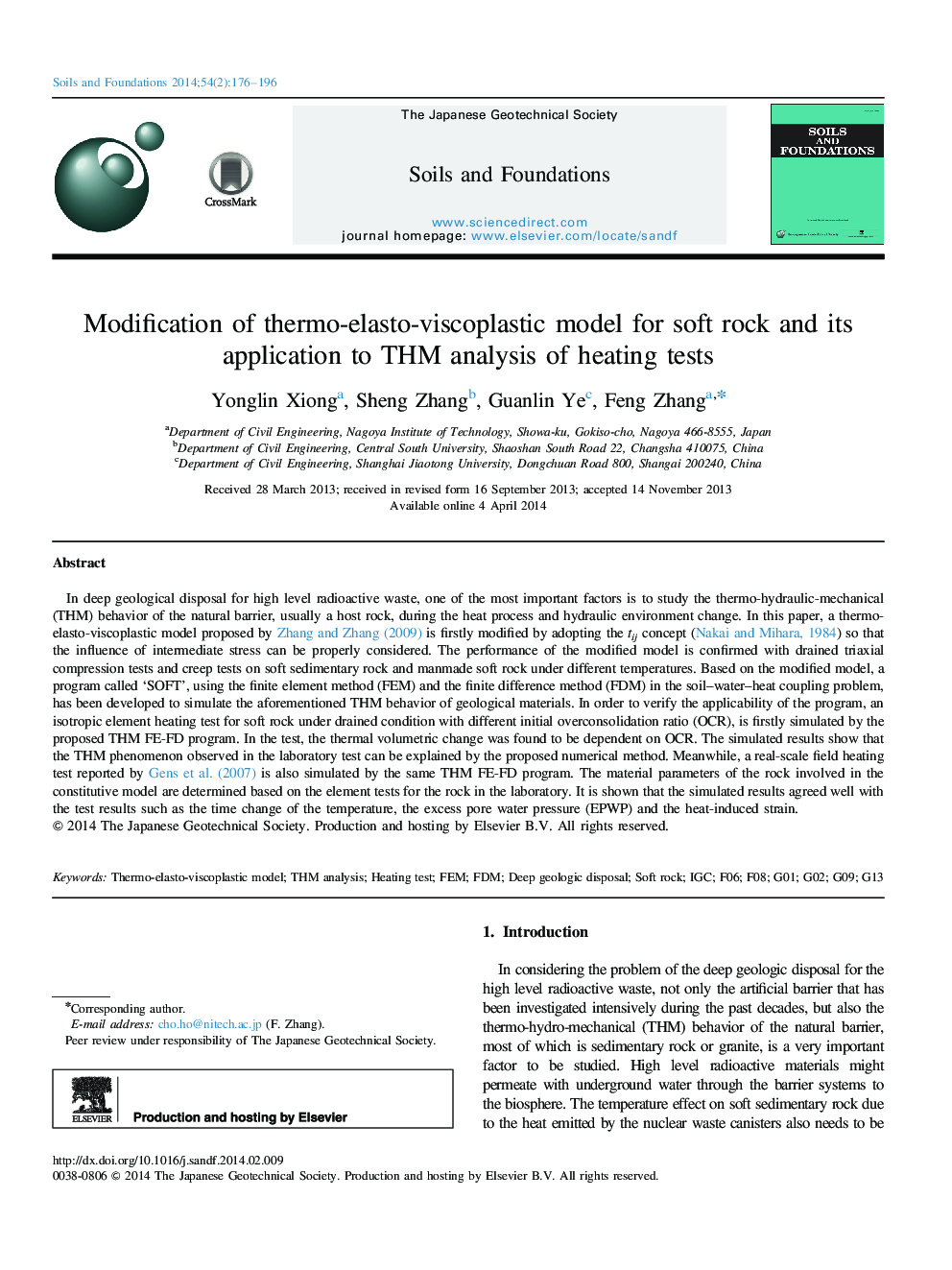| کد مقاله | کد نشریه | سال انتشار | مقاله انگلیسی | نسخه تمام متن |
|---|---|---|---|---|
| 307227 | 513345 | 2014 | 21 صفحه PDF | دانلود رایگان |

In deep geological disposal for high level radioactive waste, one of the most important factors is to study the thermo-hydraulic-mechanical (THM) behavior of the natural barrier, usually a host rock, during the heat process and hydraulic environment change. In this paper, a thermo-elasto-viscoplastic model proposed by Zhang and Zhang (2009) is firstly modified by adopting the tij concept (Nakai and Mihara, 1984) so that the influence of intermediate stress can be properly considered. The performance of the modified model is confirmed with drained triaxial compression tests and creep tests on soft sedimentary rock and manmade soft rock under different temperatures. Based on the modified model, a program called ‘SOFT’, using the finite element method (FEM) and the finite difference method (FDM) in the soil–water–heat coupling problem, has been developed to simulate the aforementioned THM behavior of geological materials. In order to verify the applicability of the program, an isotropic element heating test for soft rock under drained condition with different initial overconsolidation ratio (OCR), is firstly simulated by the proposed THM FE-FD program. In the test, the thermal volumetric change was found to be dependent on OCR. The simulated results show that the THM phenomenon observed in the laboratory test can be explained by the proposed numerical method. Meanwhile, a real-scale field heating test reported by Gens et al. (2007) is also simulated by the same THM FE-FD program. The material parameters of the rock involved in the constitutive model are determined based on the element tests for the rock in the laboratory. It is shown that the simulated results agreed well with the test results such as the time change of the temperature, the excess pore water pressure (EPWP) and the heat-induced strain.
Journal: Soils and Foundations - Volume 54, Issue 2, April 2014, Pages 176–196